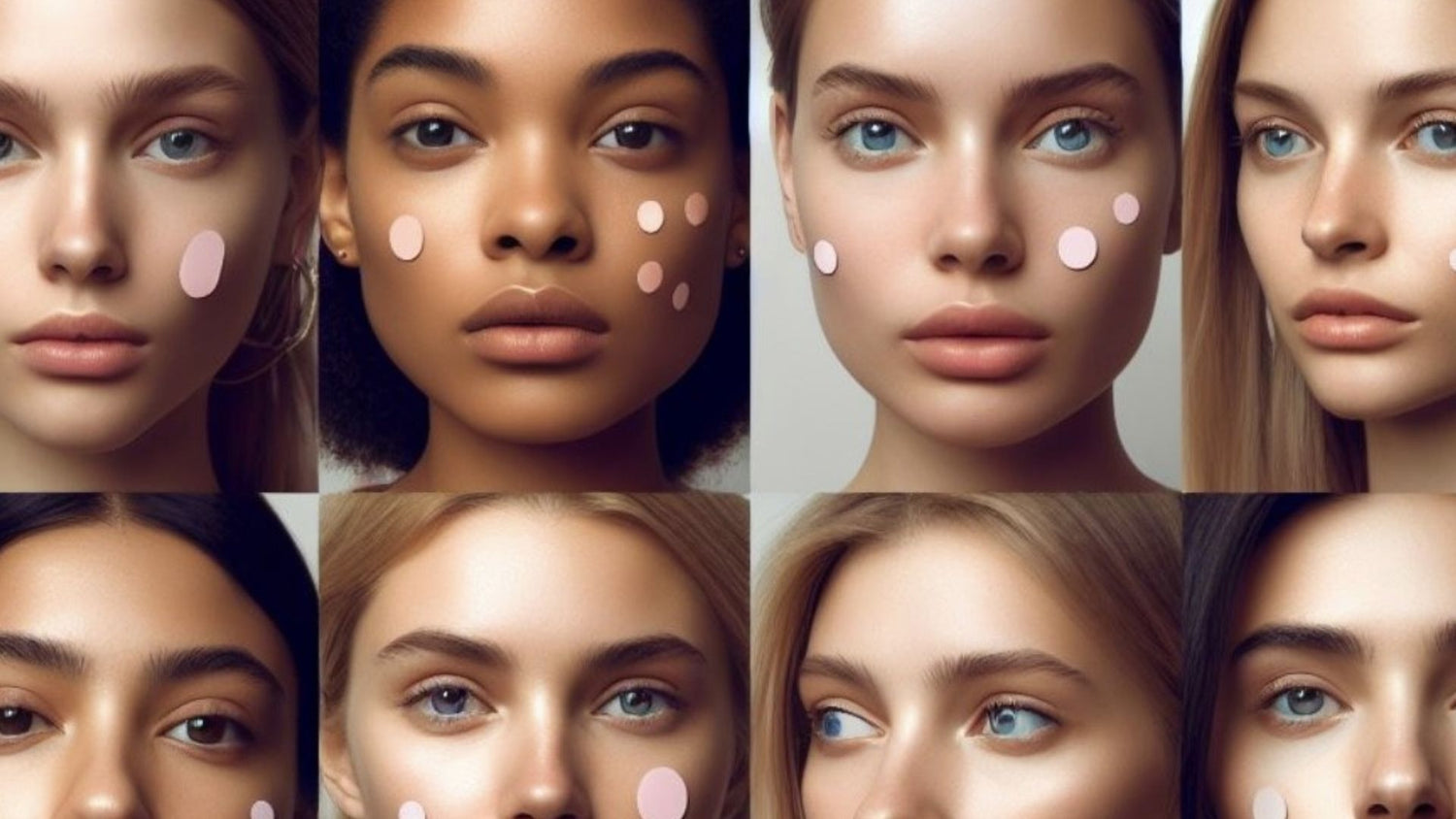We asked you if you could have any type of beauty expert (skin, hair, makeup artist, etc) cornered in an elevator for 30 minutes, what kind of expert would you want and what would you ask him or her? Many of you had questions for a dermatologist so we brought in our resident dermatologist, Dr. Ellen Marmur to help.
What is the best skin care advice that you give to your patients?
My best skin care advice to my patients is to simply simplify! Know what skin does, how it works, and it’s basic architecture first. Then shop for your skin care products knowing more than anyone selling them so you chose based on good knowledge over marketing.
What is the best way to treat very sensitive skin that needs both early anti-aging intervention AND treatment for breakouts around the jaw line and chin? Thank you in advance!
In my book you can read my tricks for how to do exactly what you asked. Sensitive skin does not disqualify you from anti-aging products (yeahhh!!) but you need to use them wisely. First, be sure your sensitivity isn’t actually an allergy—ask your dermatologist for an easy, painless patch test. Then try using Epiduo or for your breakouts twice a day to the spots as necessary. For anti-aging try a product with a retinol. Refissa CR (prescription) is new—it has a medium strength retinoid plus a strong emollient to prevent dryness and irritation of the skin. Give it a shot!
What is the best cure for under eye bags? Collagen? – Vanessa M.
Dear Vanessa—Big bags or little bags? Right under the lashes? Or down above the bony rim of the orbit? Some bags can be camouflaged by using fillers around them. Collage is no longer used. The best filler for this area is called hyaluronic acid. It is considered an off label use and should be injected only by core cosmetic physicians—dermatologist, plastic surgeons, facial plastic surgeons, and ENT surgeons. But it’s absolutely beautiful when done for the right person. If you have bigger bags under your eyes, you may be a good candidate for eyelid surgery called blepharoplasty. Ask your dermatologist for advice, but don’t worry, there are ways to fix the bags! Otherwise, topical creams may not be satisfactory to you so save your money for the right procedure.
I recently noticed that the pores on my checks that are closer to my nose are more prominent than the rest of my face (they are on both sides of the face). Can you advice what I can do to minimize or shrink my pores? It is more noticeable when I use powder foundation, the skin looks dry and rough.
Help! I have great skin and now I am starting to freak out.
– Kristina
Dear Kristina, Did you know that these may not be pores but my actually be hair follicles?? The density of hair follicles is greatest in the midline of the face—the nose and the medial cheeks. Tiny, almost invisible hairs grow there and and often we think they are pores. The good news is you can definitely minimize the pore size by doing several things. Exfoliate twice a week with a creamy exfoliator, use a retinoid at night, be excellent with sun protection everyday, moisturize with your favorite gentle creams twice a day, and try the pore strips (Biore)! They will remove any protein, oil, or dead skin from the top of the skin and allow the pore or opening of the follicle to constrict tightly. The Rolls Royce of treatments you can do for large pores is a series of Fraxel laser resurfacing procedures. This will plump up your collagen and build up your elastin—both have the effect of tighter pores and a smooth complexion.
I am constantly trying to create that perfect dewy look that all the celebrities seem to wear so effortlessly. While I have tried many of the suggested techniques (mixing a shimmer in with moisturizer or foundation, cream blush, etc), I am really searching for a few all-time favorite products that can help one achieve such a glamorous glow! What specific beauty finds would you recommend?
– Jody
Dear Jody—This is actually easier than it sounds. Rule #1—simplify. The last thing you need is dry, irritated, over-exposed skin when trying for the dewy look. Rule #2—exfoliate, moisturize, protect with sunblock. Rule #3—use self tanner (Clarins is a favorite.) Rule #4—use a serum. Serums have illuminators in them that give a dewy sheen. Rule #5—keep your make-up light and sheer (try Laura Mercier for the natural look. She has wonderful sand colored eyeshadows and bronzers that may be great for you!)
Do fat cells create oilier skin? In other words, is it true that the fatter you are the oilier your skin?
– Suzette
Dear Suzette—it is sooo not true that more body fat causes oilier skin! Oil glands are very much genetic and hormonally stimulated. Yes, hormones are related to obesity, but there is no data to support that oily skin is more common in people with higher percentage of body fat. If you want help with oily skin, your dermatologist has great tricks for you. Accutane (very low dosage) helps, Plexion pads twice daily are great, and oil free mineral makeup is good for oily skin types.
How do you treat milia? When I look it up it seems more common for newborns but I am referring to milia associated with acne. Any reason why it develops? Thanks!
– Yvette
Dear Yvette—milia with acne are actually called closed comedones. They are little cyst under the skin. Open comedones look black because the air oxidizes the protein in the cyst thus the dreaded blackheads. Comedones are partly due to a problem with skin turnover, meaning retained skin on the surface, leading to clogged pores and cysts. You should see your dermatologist first to confirm this diagnosis. Then you should come up with a simple routine that can protect, enhance, and troubleshoot! My favorite new product for your issue is Epiduo cream (prescription). Try to do 2 chemical peels a year and use non-comedogenic products to maintain your perfect skin!
I’m confused about chemical sunscreens vs. physical sunscreens. Are you better protected from sun damage when you wear a broad spectrum chemical sunscreen or when you wear a physical sunscreen? For maximum benefits, should you layer physical sunscreen over a chemical sunscreen? Are there products on the market that combine both types of sunscreen in one product? Thanks for your help!
– Vanessa Eliana Rivera
Dear Vanessa, There are chemical sunscreens and physical sunblocks and yes, use them in combination for the best protection. Sunscreens are chemicals that intercept the UV ray and turns it into heat so it evaporates off the skin’s surface without penetrating and causing havoc. But sunscreens get used up the more sun it converts, like gasoline in a car runs out the more you drive. So reapply every 1-2 hours. Physical blockers literally rest on top of the skin and block the sunlight from penetrating through them. Zinc and titanium oxides are two examples. They don’t run out or get used up like sunscreens but they wipe off due to water or sweat, so they need to be reapplied every 1-2 hours, too. Each chemical has it’s strengths and limitations so a combination is the best way to go. Unless you invent the ideal sunscreen with one molecule that perfectly protects the skin from the sun, use a combo of sunscreen and sunblock.
When should you start using more aggresive treatments like AHA’s and peels?
– Marisa Bradford
AHA’s and chemical peels are superb in young people with acne, or very, very old people over the age of 30 🙂 who need a little help with pigmentation from hormones or fine lines. Peels can be very light to very strong and I love them, but only let a very experienced doctor do them for you.
I need advice for Baby Boomer skin! How can I reduce the signs of aging skin?
– Barbara Moon Webster
Ok, so baby boomers are in their 40’s and 50’s right? And therefore, your skin aging is showing up as brown spots, wrinkles, and perhaps a little laxity of your cheeks. This is a great question and I wrote an entire chapter on it in my book (SSB). Essentially, your routine must focus on protection, moisturizing, and trouble shooting. Protect with sunscreen every day of the year, moisturize twice a day, and trouble shoot away those signs of aging. Laser or peel off the brown spots and wrinkles. Use a retinoid to prevent new ones. And simply, you are good to go!!!
How does one get rid of whiteheads for Baby Boomer Skin? Mostly cheek bones area?
– Kim Snyder
Kim—I have those too! They are called milia—little, white, closed cysts that are just under the skin. If you have just a few, then yes, professional extraction is the easiest thing. If you have a lot, then you need a master plan. Exfoliate daily with a gentle exfoliator (like Sanitas lemon creamy exfoliator), use a retinoid at night (the new Refissa cream looks amazing, it’s a prescription), have one good chemical peel with your doctor or a Fraxel resurfacing treatment, and be sure to remove make-up from your skin at night (Clinique’s milk creamy make up remover is nice!)
These can result from sun damage, make up, or injury to the skin. Good luck!
I have a question strictly about redness in the skin. I have redness more around my nose and on my cheeks. Is there a treatment I can do to get rid of it?
-Stephanie
Hi Stephanie—all redness is not created equally. If you have any other issues like flakey skin, pimples, or symptoms like itching or burning along with the redness, you should ask your dermatologist to you make a diagnosis. Rosacea, seborrheic dermatitis, and allergic or irritant contact dermatitis can look red. Sometimes—rarely—it can be more serious. So have that redness checked. But, yes! If it is just lucky red skin, then we can treat you with intense pulsed light and pulsed dye laser! Some people uses anti-inflammatory creams like Finacea or metrogel to help reduce redness too. I’ve had good luck using Fraxel laser to reduce redness as well—which also replaces sun damaged skin with new, healthy skin, and helps tighten, smooth, and lift the skin.
Ellen Marmur, M.D., the author of Simple Skin Beauty: Every Woman’s Guide to a Lifetime of Healthy, Gorgeous Skin wants to know YOUR candid questions.
Dr. Marmur is the Chief of Dermatologic and Cosmetic Surgery at The Mount Sinai Medical Center in New York City and specializes in skin cancer surgery, cosmetic surgery, and women’s health dermatology.



